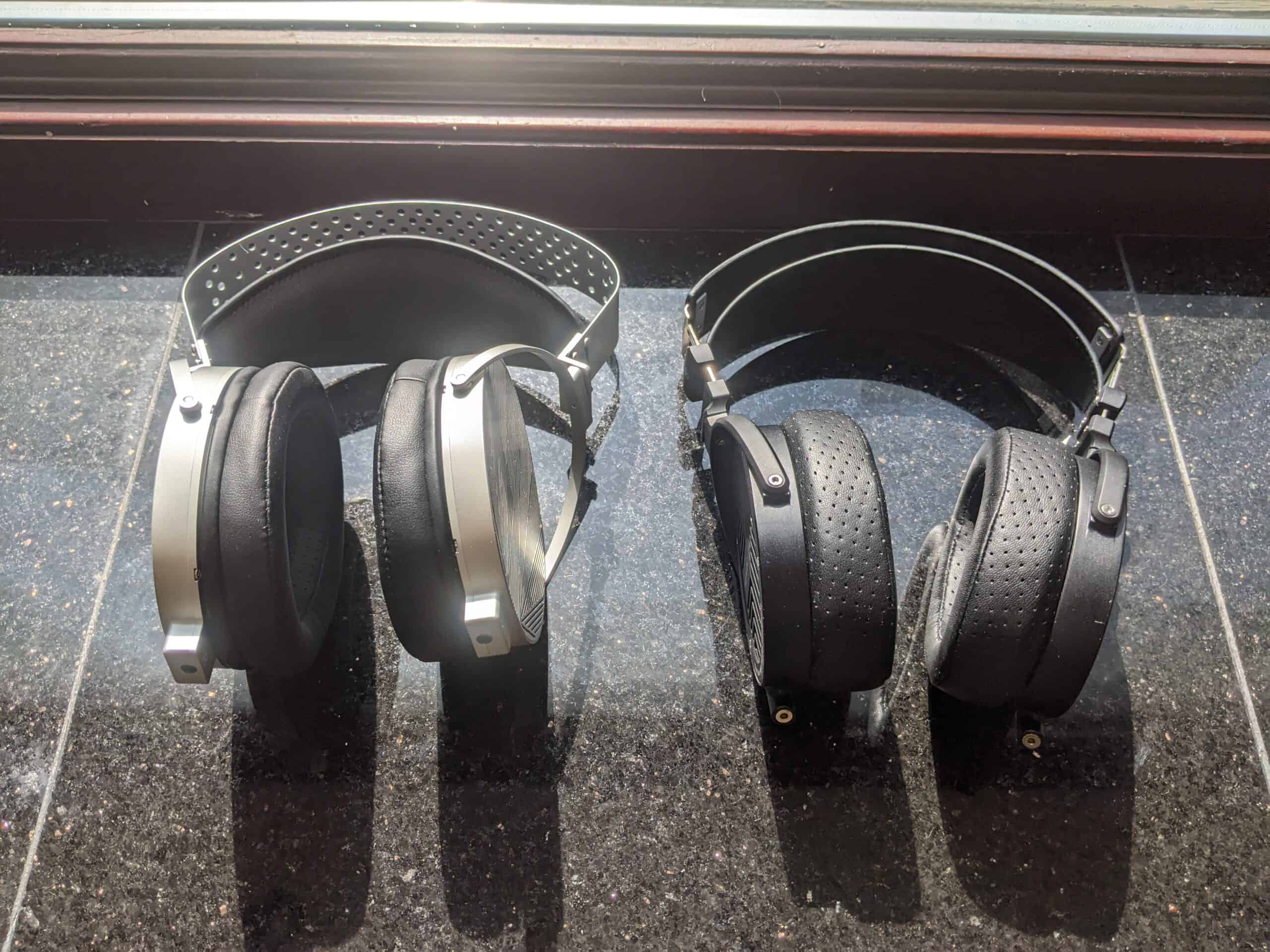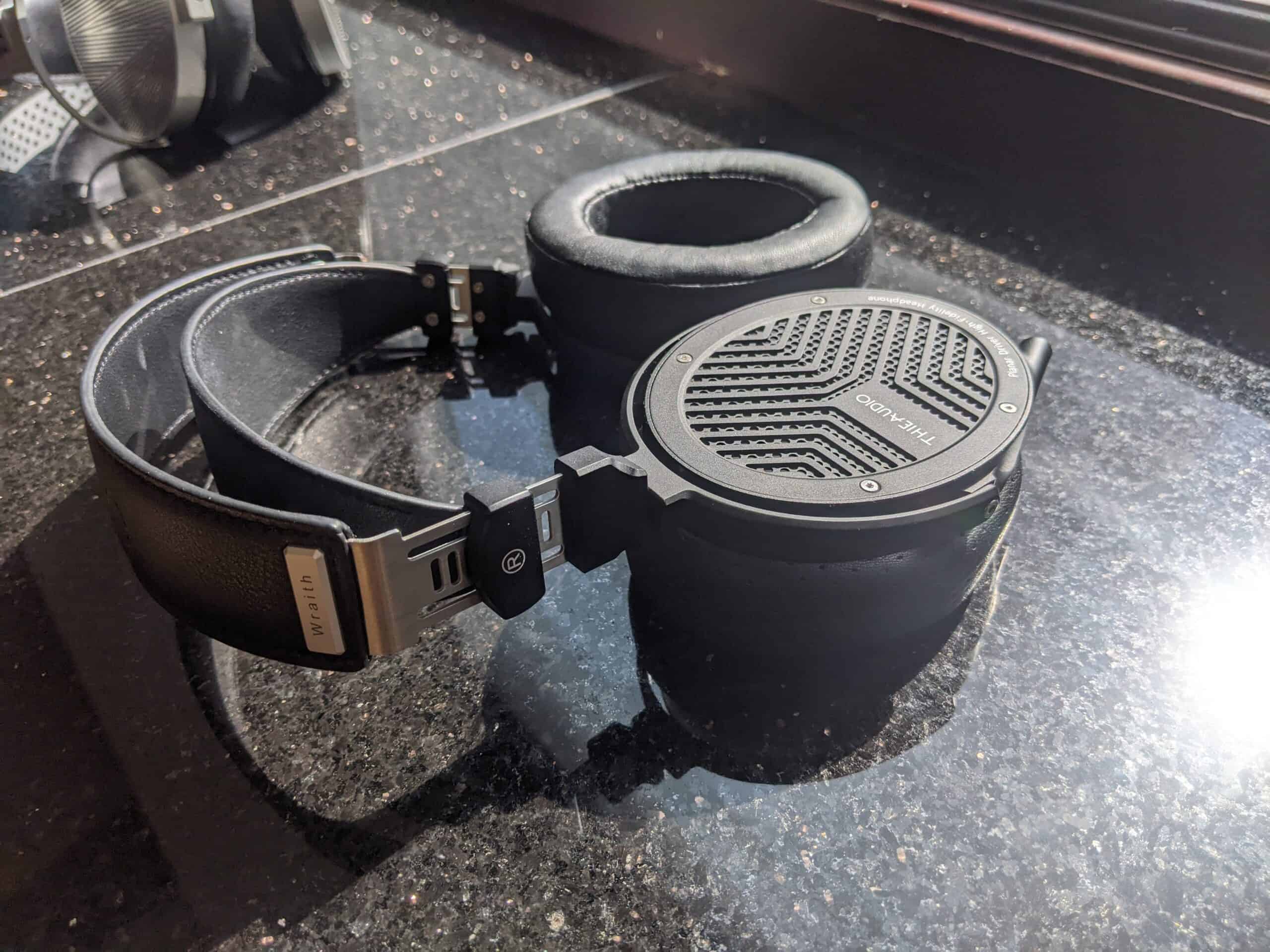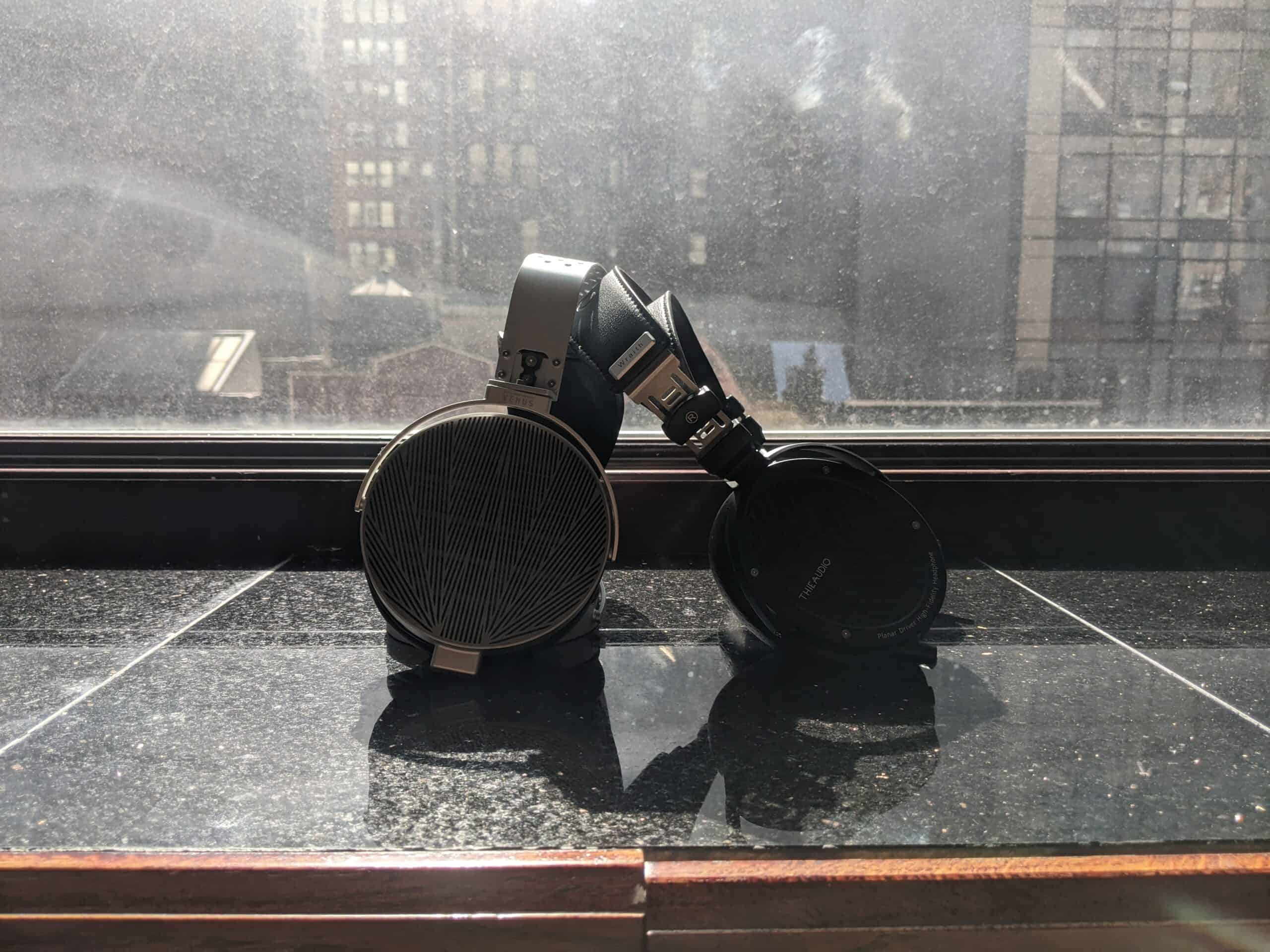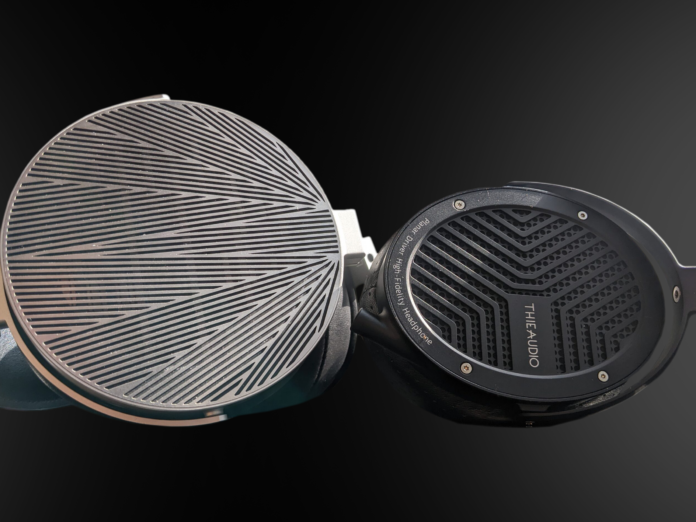Moondrop Venus vs. ThieAudio Wraith Comparison Review
A Moondrop Venus and ThieAudio Wraith comparison review has been a little overdue. It’s clear that the competition is stiff here: both come from highly acclaimed IEM manufacturers taking some early steps into the over-ear market. Both are open-back planar units that sport similar price tags, with ThieAudio’s Wraith coming in at around $550 and Moondrop’s Venus at $600. How do these two units with similar backstories compare? Let’s take a peek inside their boxes, go over their design elements, and most importantly, see what differences and similarities these two hold in their overall sound.
What’s In The Box?
| ThieAudio Wraith | Moondrop Venus |
|
|
Look and Feel

I don’t know who copied whose homework here, but the Venus and the Wraith have strikingly similar designs that I would categorize as industrial-chic. Both are constructed from metal alloys and feature aesthetically pleasing grill designs on the backs of their cans. Suspension headbands are featured on both headphones: the Venus with a more traditional self-adjusting band, and the Wraith with a pretty unique band that adjusts manually in intervals that click into place.
Both headphones are on the hefty side in terms of weight, but the Moondrop Venus is noticeably heavier at 615 grams vs. the Wraith’s 450 grams. Though 615 grams may pose a concern for some people, the Moondrop Venus’ suspension headband is resistant, buoyant, and comfortably distributes the headphone’s mass. I had absolutely no issues wearing either headphone on my head for long periods of time, and would say that both offer a degree-above-average comfort.
Technical Design and Specs
The Wraith pulls its technical design from enhancements made to ThieAudio’s very first over-ear, The Phantom. A new conductor membrane has been deployed, as have thinner magnetic plates that have a 1.5x stronger magnetic field. We also see an enhanced structural airflow design. A particularly interesting note on the Wraith from ThieAudio is that they tuned it with vocal optimization in mind by placing special emphasis from 1 to 3 kHz. ThieAudio also markets the Wraith for professional use by mixing and recording engineers, but I’ll come back to this later.
The Moondrop Venus has a 100cm driver that’s a mere 2 microns thick, with a printed silver circuit that’s 1 micron thick. These features result in a sensitive, lightweight diaphragm with low heat loss. Stresses on the silver circuit are evenly distributed, as is the magnetic field parallel to the diaphragm. This even magnetic field is achieved through through finite element analysis optimization – I won’t get into the nitty gritty here, but this is very impressive technology to see in a $600 headphone.

| Spec | Moondrop Venus | ThieAudio Wraith |
| Operating Principle/Driver | Open Back / Planar | Open Back / Planar |
| Impedance | 18 ohms | 23 ohms |
| Frequency Response | 6 Hz – 80 kHz | 20 Hz – 40 kHz |
| Sensitivity | 100 dB | 101 dB |
Soundstage
In terms of sound stage size, ThieAudio’s Wraith comes out on top. It’s not an enormous stage, but it provides enough space for some impressive spatial dynamics, and specializes in producing a fairly vast width. Vocals, boosted by design, appear close to the face, while instruments are capable of taking a considerable step back in the depth provided by the Wraith. One of my favorite qualities of the Wraith’s stage was how lower frequencies presented themselves as coming from far below me.
Perhaps the only criticism I have for the Wraith’s staging is that it’s not particular sensitive to more subtle details in stereo placements. In one of my main test tracks for soundstages, “Idler / Sleep” by Jamie Isaac, I usually look for the opening, heavily left panned drum beat to sound like it’s reflecting in a room when it interacts with its reverb/delay channel that’s panned in the right ear. On the Wraith, sure, I heard both channels distinctly from one another, but it didn’t put me in the most realistic “in-the-room” headspace. Perhaps I’m nitpicking a little here; I generally enjoyed what the Wraith’s imaging and stage had to offer.
While the Venus has a fairly small stage, it’s fun, energetic, and accurate. Despite parts being kept pretty close to my head, it provided compelling over-the-shoulder presentations on hard pans. Very subtle pans and intricate stereo placements were produced quickly and easily, and provided a very compelling and realistic headspace.
ThieAudio’s Wraith has more size going for its stage, while the Venus has more sensitivity and movement – and perhaps accuracy.

Lows
The Moondrop Venus seems to have a pretty evenly distributed bass balance, with clean subs and mid bass defining its low end. The Venus’ circumaural cans make its design conducive to realistically delivering its lower frequencies, slathering a wide area around the ears with big, vibrating bass frequencies. High bass is neither boosted nor attenuated, playing more of a supporting role that provides realism and energy without outright imparting a distinct timbre on the overall balance.
ThieAudio’s Wraith has a similarly present low end but it takes on a different shape and color. Subs are a little less noticeable, and the energy is shifted upwards towards mid bass and a fairly prominent high bass. Though balances that prioritize high bass can often be pillowy or muddy, the Wraith pulls off it high bass with excellent clarity and speed. Where the Venus can offer big and smooth lows, the Wraith goes for more of a firm, warm and punchy texture in its low end.
Mids
Moondrop’s Venus exhibits a mids profile that at first seemed evenly balanced, but revealed its subtle-but-noticeable high-mid emphasis over the course of my listens. There’s a crisp and lean quality to its center profile that gives the bodies of vocals, guitars, and drums a natural presentation. I would generally describe its center frequency balance as neutral with a hint of upper-mid lift.
The Wraith is a bit more stylized with its midrange – though not outright V shaped, its finds a distinct emphasis in low and high mids alike. Much like what I had to say about the Wraith’s high bass, the low mid emphasis adds warmth and thickness to the balance without obfuscating or clouding mixes, adding a little extra thump and body to snare drums, for example. A bit to my surprise, I didn’t find vocal fundamentals particularly emphasized, which may have to do with the heavy boost in the high mids and highs that draws more attention to their crisp overtones. I’ll discuss the Wraith’s high mids in the next section, as its better contextualized with its high end.
Highs
The Wraith finds a particular emphasis in its high mids and its low treble, which, as promised by ThieAudio, imparts an excellent clarity and crisp timbre onto vocals. Vocal parts punch through a mix with a lot of intensity, without painful or unnatural peaks. Another beneficiary of this heavy low-treble balance was guitars. Distorted guitars tore through mixes in a very exciting way, and even acoustic guitars had an edgy sort of drive to them that made my ears vibrate.
Moondrop’s Venus is slightly more reserved in its higher frequencies, but finds a particular emphasis in its mid treble and seems to exhibit greater extension in its high treble, thus giving it a more lifted sound than the Wraith. While ThieAudio’s Wraith delivers an increased sense of drive on guitars with its boosted low treble, the Venus pulls more twangy harmonic qualities out of guitars (and other instruments) with its boosted mid treble. Despite the Venus generally being more reserved through out much of its higher frequency amplitudes, its more pronounced mid treble boosts makes it the brighter of the two headphones. The trade off of its airier signature is that it flirts with fleeting moments of harmonic harshness.
Overall

Despite how things may first appear, the Moondrop Venus and ThieAudio’s Wraith are very different headphones with very different appeals. I would categorize the Moondrop Venus as a more universally appealing headphone, while ThieAudio’s Wraith is more heavily stylized and likely to produce stronger opinions – one way or the other. As for me, I air more on the side of the Wraith. Its vibrating, firm and driving tone meshed well with my personal tastes, and I have to say, it grew on me quite a bit since my first listen with it a few months back. To sum things up, both of these headphones were a genuine pleasure to listen with and I don’t find one outright “better” than the other; let your subjective preferences guide you.
Order ThieAudio Wraith and the Moondrop Venus from Audio46.
| Moondrop Venus | ThieAudio Wraith |
|
|
Compare the ranking of various headphones, earbuds and in-ear monitors using our tools.
Discuss this, and much more, over on our forum.
---MAJORHIFI may receive commissions from retail offers.















